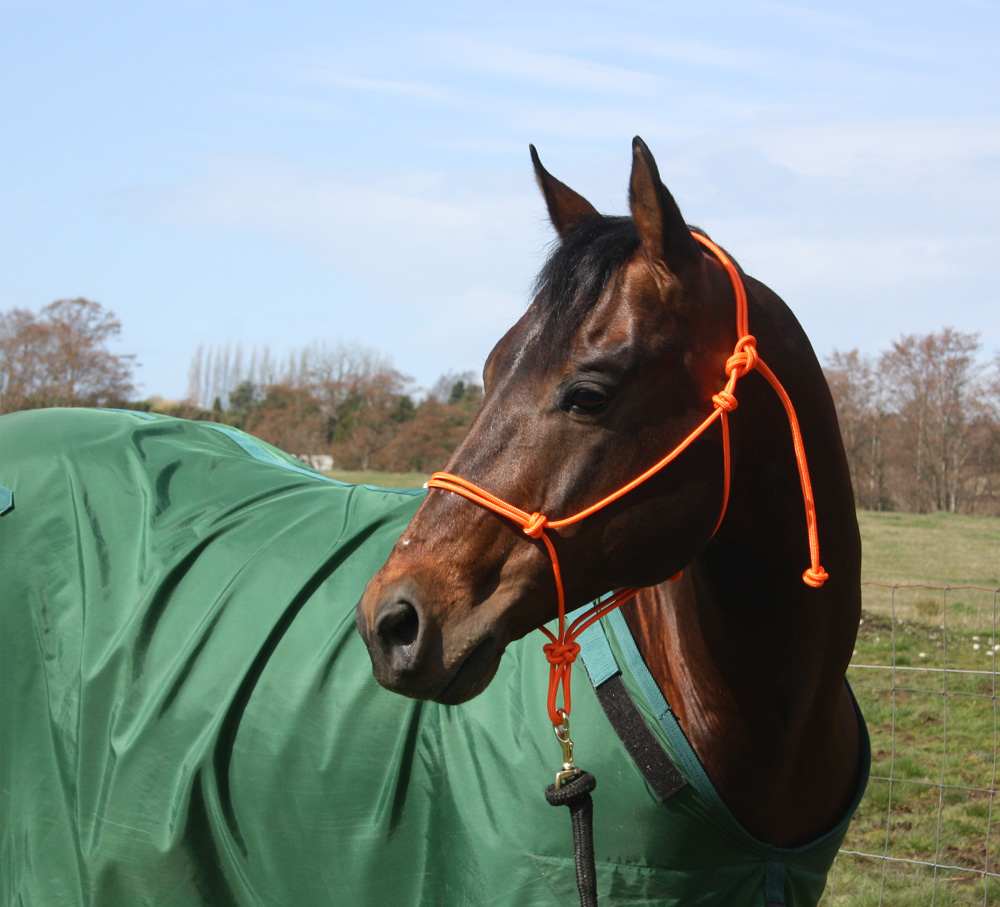Stay Aware and Develop Correct Habits
by Allison Trimble

Last month we talked about the philosophy behind horses and safety. There are two types of interactions with horses: what happens on the ground in our daily activity and the interaction that occurs when riding or training. This month is focused on safety during daily activity and ground interaction.
Calm awareness around a horse or herd of horses is key to observing potential danger. In daily activity it’s easy to become complacent about horsemanship. We have all been guilty of being too comfortable from time to time, and I certainly have scars to prove it. Even the most trusted companion is still a horse with its inherent nature, and is capable of unintentionally causing injury. Here are some situations where that awareness is especially important.
Within a herd and feeding time: When a horse is within a herd, there is a pecking order that often trumps the horse/human dynamic. Many people are run over or kicked as a result of simply being in the wrong place at the wrong time. About 13 years ago I was kicked dead-on in the thigh by a horse that kicked at the horse I was leading. The handler in front abruptly stopped and I wasn’t paying attention and the horse in front kicked at my horse, but landed the blow on my leg. It was a painful reminder that even though a horse may not intentionally kick a human, they will kick at each other.
This truth is exacerbated at feeding time when the pecking order is exhibited most strongly, and therefore is the most likely to result in casualties. If horses are fussing between themselves, I encourage people not to interfere with a herd’s pecking order to try and establish dominance. If a horse is not in a herd and being aggressive to a human at feeding time, that is an opportunity for horse growth, and an important place to clarify the horse/human pecking order.
Confined spaces: I have lost a couple of friends to accidents that occurred in a confined space with a horse. Stalls, wash racks, breeding stations, horse trailers and fences are all situations that can sandwich a human between the force of a horse and a solid barrier. In that equation, the thing that breaks is most often the person. Never position yourself or a body part between a horse and a solid object. The multitude of things that can go wrong in any of the aforementioned confined spaces can easily result in serious injury to humans. Internal sirens should go off any time that situation occurs.
Tying: This may seem a bit basic, but I see it done incorrectly so often I am going to cover it. Halters should always be snuggly fitted, and if it’s a rope halter, properly tied. If tied with a lead rope, the rope should be no longer than 18 inches from halter to knot. The rope should be double wrapped around the hitching post so that the knot does not bear any weight of the horse, and the knot should be a quick-release knot.
Leading and safe space bubble: Horses should always be led at a distance of at least an arm’s length away with no fingers in the halter and no loops in the lead. The horse should track to one side or the other of the horseman, never behind. In the event the horse spooks when behind the handler, he will often take out the unaware handler.
An important rule to always follow: The handler may initiate contact with the horse; the horse may never initiate contact with the handler. This is true any time the handler is in proximity to the horse.
Handling wrecks: If a horse becomes entangled, pulls back, or is in any kind of a “wreck” situation, do not run at the horse and intervene. This seems counterintuitive, but running toward a wreck nearly always has a negative outcome.
It’s inherently dangerous to be near a horse who is in the midst of a flight or fight response. Instinct has taken hold, and they are simply not a thinking creature in that moment. A horse will struggle and fight and do what damage they will do, then typically relent and submit. That’s the safe time to approach and do what needs to be done.
Turn out: Be aware during the moment of releasing a horse into freedom—whether into the round pen, field, or stall. Always turn and face the horse up to the gate before release so that they must pivot an entire horse length to leave. This protects against a sassy heel kick to the face. Too often I see a handler walk into a pen and directly release a horse without turning them, resulting in hind feet bolting past the handler.
Always remember that the pecking order established with a horse is paramount to safety. It must be maintained in a healthy way with every interaction with a horse. Intentional horsemanship, above all else, is the surest source of safety for both horse and horseman.
Published in August 2016 Issue

Allison Trimble is a Realtor® specializing in equestrian properties, farm and ranch properties, and residential real estate. She’s a former horse trainer, and a current owner, breeder, and non-pro competitor in cow horse and reining events. For many years, Allison wrote a monthly column for The Northwest Horse Source.
Learn more at www.allisonblakerealestate.com





